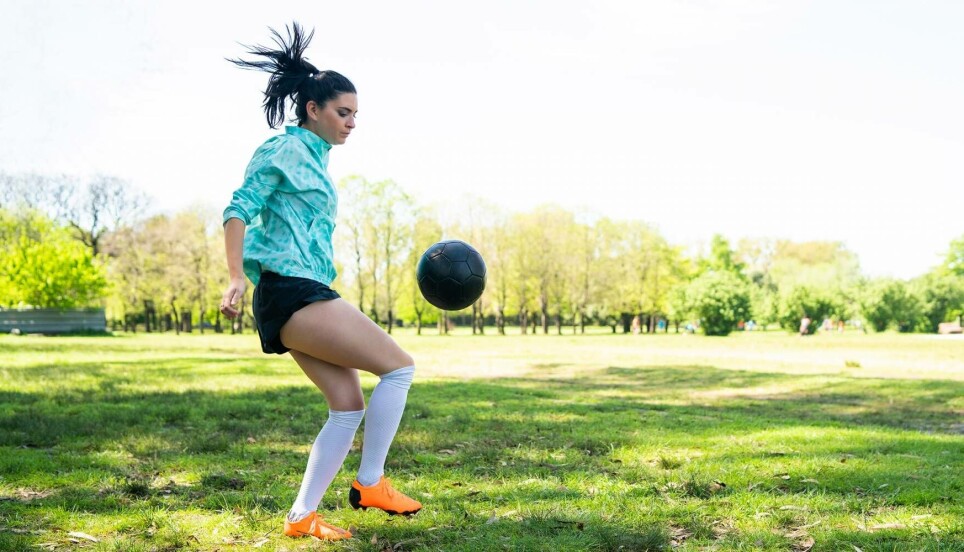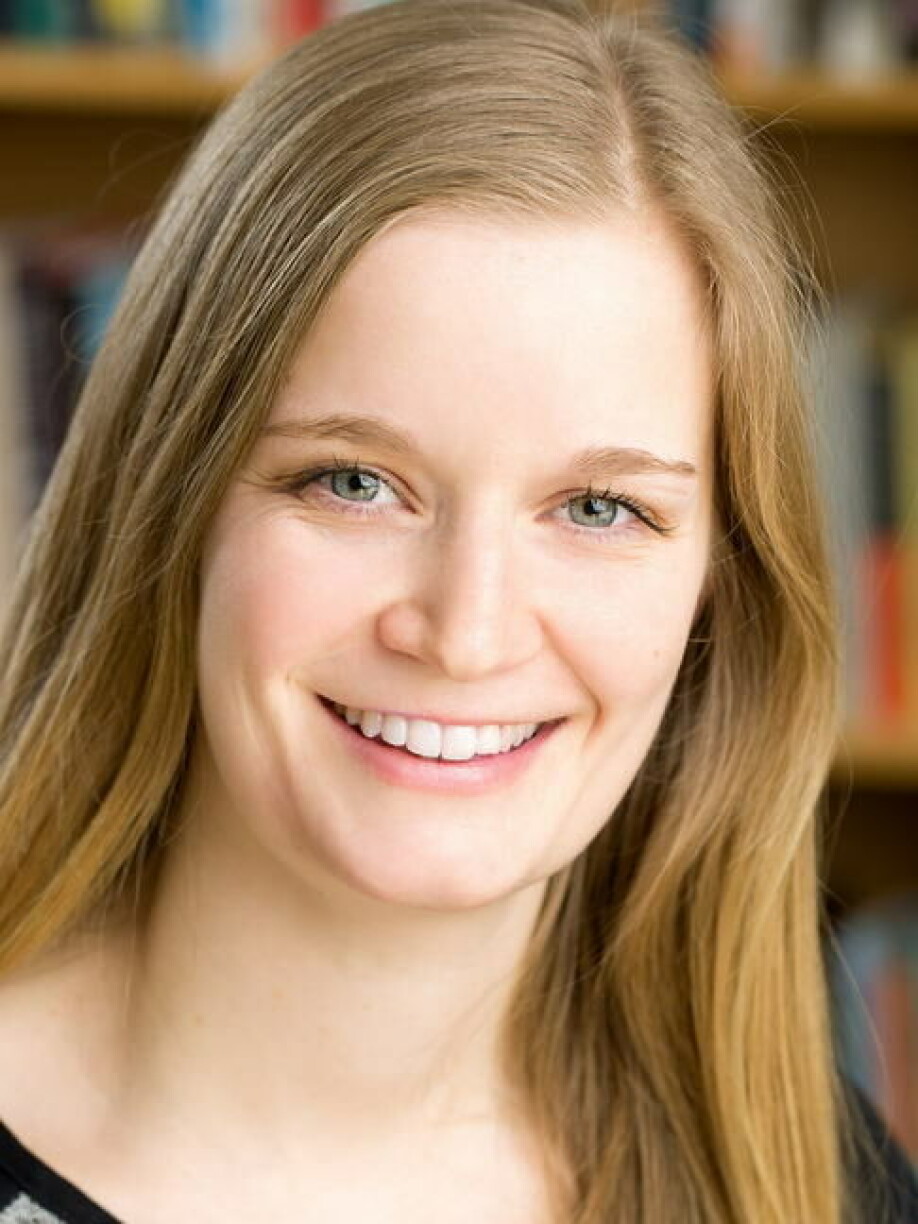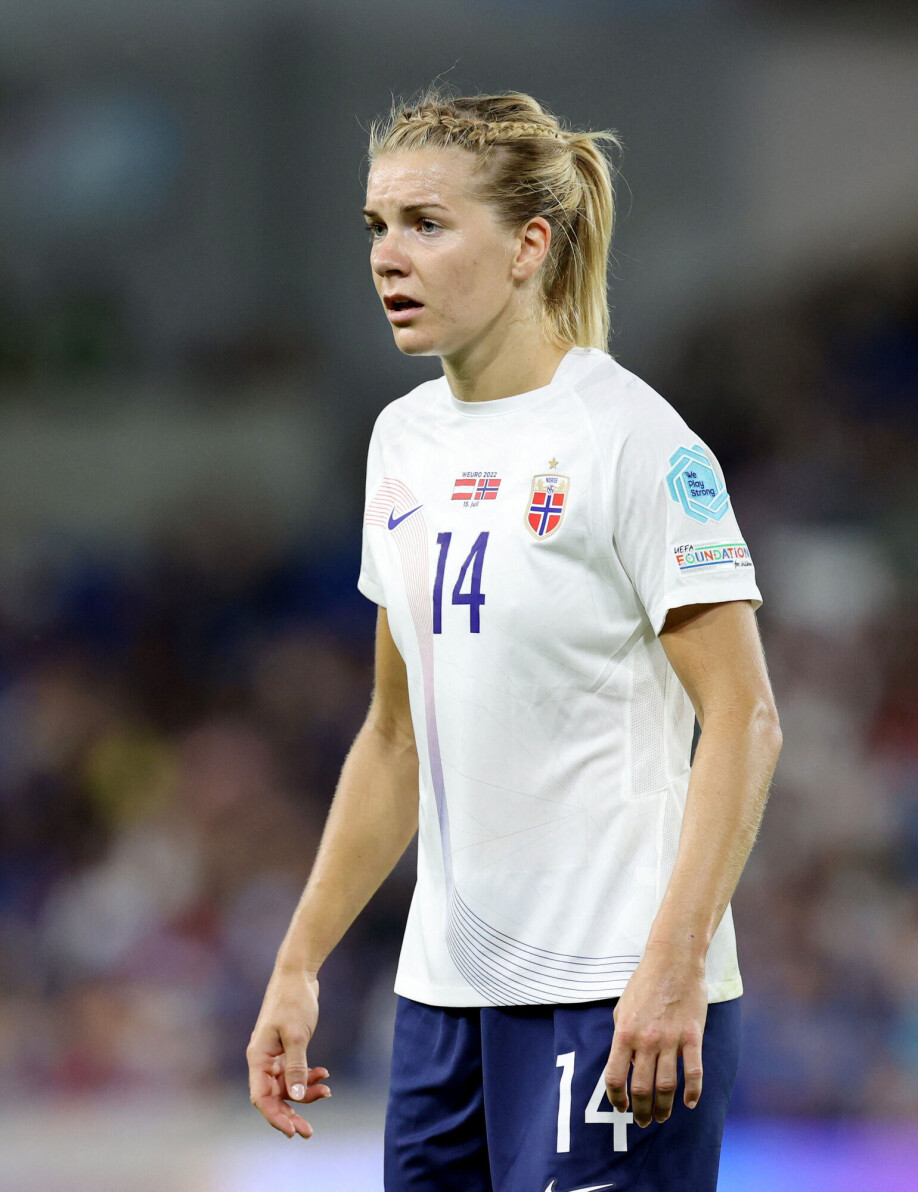THIS ARTICLE/PRESS RELEASE IS PAID FOR AND PRESENTED BY Oslo Metropolitan University - read more

Football for everyone – or mainly for boys?
The opportunities offered to boys and girls who play football in Norway are different, according to new research from OsloMet.
Sport is supposed to be for everyone – but a new doctoral thesis from OsloMet shows that this not necessarily the case in practice.
“In football, for example, boys and girls don't have the same possibilities. It is clear that there is discrimination here,” Marlene Persson says. She recently defended her doctoral thesis Stang ut! Jenters idrettsdeltagelse i tenårene (Tough luck! Teenage girls’ participation in sport).

Gender inequality at all levels of the sport
In a recent investigative story published by the Norwegian Broadcasting Corporation NRK, they revealed that Norwegian top-flight football clubs spend almost three times as much on developing boy players as on girl players.
Persson’s research finds the same skewed treatment of boys and girls in her thesis, but she also shows that this discrimination does not just apply to teenagers who aspire to the top level.
Girls who participate in sports at the recreational level are also only given limited resources. This means that there are gender differences in teenagers’ access to what is largely a publicly funded program. In other words, the findings have consequences that go far beyond elite level sport.
The issue therefore also concerns the position and legitimacy of sport in the context of welfare policy.
“There are many examples of discrimination. They signal to the girls that they are not as important to clubs, and that sport is mainly for boys,” Persson says.
Boys have better training facilities
In her fieldwork, during which the researcher interviewed teenage footballers from two different top-flight clubs, she found countless examples of skewed distribution and differential treatment.
It emerged that the boys’ teams were trained by paid coaches at an earlier age than the girls’ teams, and that the girls were often given less favourable training times than the boys.
The girls she interviewed also stated that they had experienced being chased off the training ground by younger boys’ teams who had so-called ‘priority’, or that other coaches removed the goal the girls were using for training so that they had to play without goals.
“There were also examples in one club of boys getting free clothes and it being free for boys to take part in tournaments, while the girls had to pay,” Persson says.
Surprised by the differential treatment
It also emerged that the boys in one of the clubs were allotted more indoor training time in winter, while the girls for the most part had to train outdoors. Some of the girl footballers also described having to play on icy, dangerous pitches, while the boys were allowed to play on a heated artificial turf pitch right beside the icy pitches.
“For the girls, the result was that many of them found it difficult to motivate themselves to attend winter training, and that their training was more often cancelled due to winter weather than was the case for the boys,” she says.
Persson admits that she was surprised by the differential treatment that emerged during work on her research – given that we live in a country where gender equality is seen as a highly valued ideal. She expected to find corresponding values in sport.
“Perhaps I was a bit naive when I started the project, but I honestly believed that the kind of discrimination I gradually observed and heard examples of was no longer widespread,” she says.

Little media interest in the European Football Championship for Women
The experience from the European Football Championship for Women showed that there was little coverage of the championship in Norwegian media – despite Norway participating. If it had been a championship for men, it is easy to envisage that the coverage would have been on a completely different level, according to Persson.
“Research on gender differences in media coverage has found that football is one of the sports where the differences are greatest, i.e., that men get much more attention from the media than women,” she says.
Her doctoral thesis clearly shows that this skewed coverage helps to make women’s football invisible to young girls who themselves play football.
“I have actually interviewed girls who didn’t even know who Ada Hegerberg is,” she says.
This media blackout leads to many of these girls regarding women’s football as something second-rate and less interesting than the men’s game, and thereby as something that is not worth investing as much time and effort in.
"As one of my informants put it: It’s like women’s football is nothing special," Persson says.
A feeling of being second-rate
One important premise on which the Norwegian model for sport is based is that the elite level creates widespread participation, and that widespread participation creates the elite.
According to Persson’s doctoral thesis, however, that is not necessarily the case.
“I have found that the elite level has a negative influence on the recreational level and that unequal treatment at the elite level also affects the conditions offered to girls at the recreational level,” she says.
She explains that there seems to be a clear link between how young girls perceive sport as an arena that is not really for them, and the financial conditions found in elite sports - where top female athletes are portrayed as second-rate.
“The girls encounter the same conceptions in one form or another in their own clubs and therefore receive confirmation that what applies at the top also applies to them,” Persson emphasises.
This results in many teenage girls losing motivation and choosing to drop sport as other youth pursuits become more important to them. This view is also supported by other studies of motivation and reasons for dropping out of sports.
“We consistently see that more girls than boys quit sports, despite the fact that recruitment in children’s sports is equal between genders. I therefore believe that the findings from the football teams also have applicability to sport in general," she says.
An issue that deserves more attention
Persson thinks it is high time that the issue of skewed distribution of resources and differential treatment is placed higher on the agenda. She believes it is an important prerequisite for achieving the goal of sports being enjoyable for all, which is the social mission that sport itself has undertaken.
Additionally, a fundamental change of attitude is needed at all levels of sporting organisations if the required change is to be made, she points out.
“Club management and coaches need to take a look in the mirror and think about whether they are doing things in a way that sends signals to their members that boys and girls are valued differently,” she says, and gives examples ranging from who is allotted the best pitches, equipment and coaches, to how to talk to the children when they join a club," she says.
But this is not just the responsibility of the clubs and coaches, Persson points out. She believes that the individual sports federations have a particular responsibility for creating as equal conditions as possible for their elite athletes, regardless of gender – both in regards to financial conditions and how to signal to female participants that they are valued on par with male athletes.
“In most sports today, there is a skewed distribution of market revenues, which leads me to believe that they will not manage to generate the same audience figures and framework conditions for female athletes as for male athletes, unless the individual federations are willing to invest and redistribute," Persson says.
This is not just something that affects top female athletes. There is also a question about whether the indivifual sports federations want to keep teenage girls in sports as they get older.
A longstanding problem
Mads Andreassen, head of activity development in the Norwegian Olympic and Paralympic Committee and Confederation of Sports (NIF), says that both NIF and the individual sports federations are aware of the problem and are working to remedy the situation.
“Unfortunately, we see that historical attitudes and stereotypes relating to the differences between men’s and women’s sports are also reflected in sports for children and youth. That is neither an excuse nor a situation we can accept," he says. “At all levels of sports, we must acknowledge that the problem exists and that systematic measures are needed to do something about it.”
NIF has initiated an examination of gender equality at all levels and in all functions in sports.
“This work could identify and be a driving force for necessary measures going forward. At the same time, at the local level, this means that the clubs must make sure that girls and boys are given equal opportunities. This concerns training time, the quality of the training offered and having qualified coaches,” he says. “There must not be – and there is no reason for there to be – any difference in what is offered to boys and girls.”

This article/press release is paid for and presented by OsloMet
This content is created by Oslo Metropolitan University's communication staff, who use this platform to communicate science and share results from research with the public. Oslo Metropolitan University is one of more than 80 owners of ScienceNorway.no. Read more here.
See more content from OsloMet:
-
Researcher: Local government was key to managing the pandemic
-
"Norwegians practice a friendship version of a ‘one-night stand'"
-
"We need to talk about how we assess teacher students"
-
Cannabis use in Norway has increased: “Not everyone needs moral lectures or worried looks"
-
Many children with ADHD do not thrive at school
-
An out-of-control race: Why we fear artificial intelligence




































